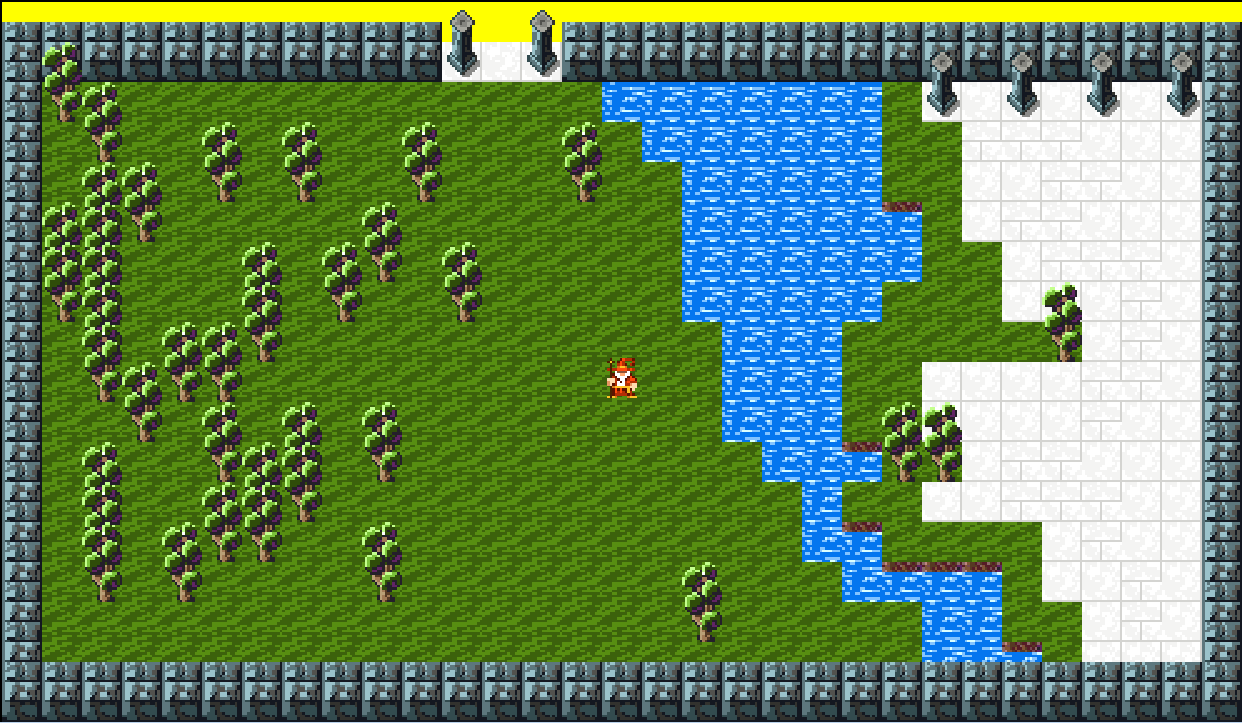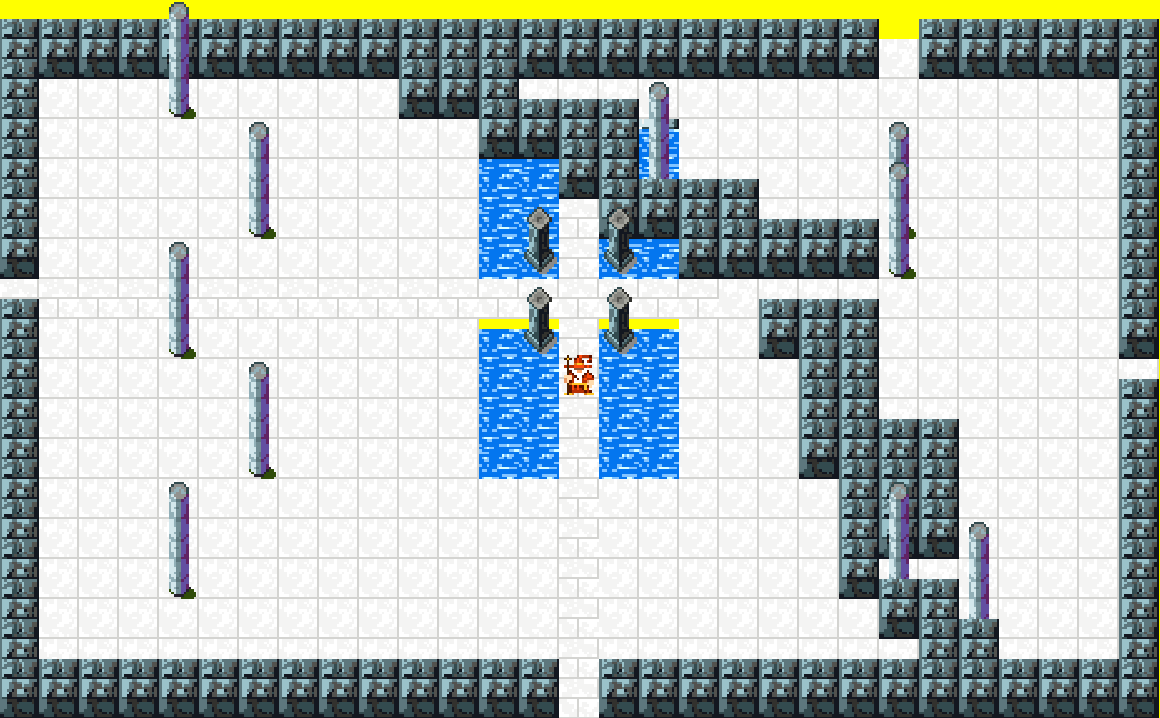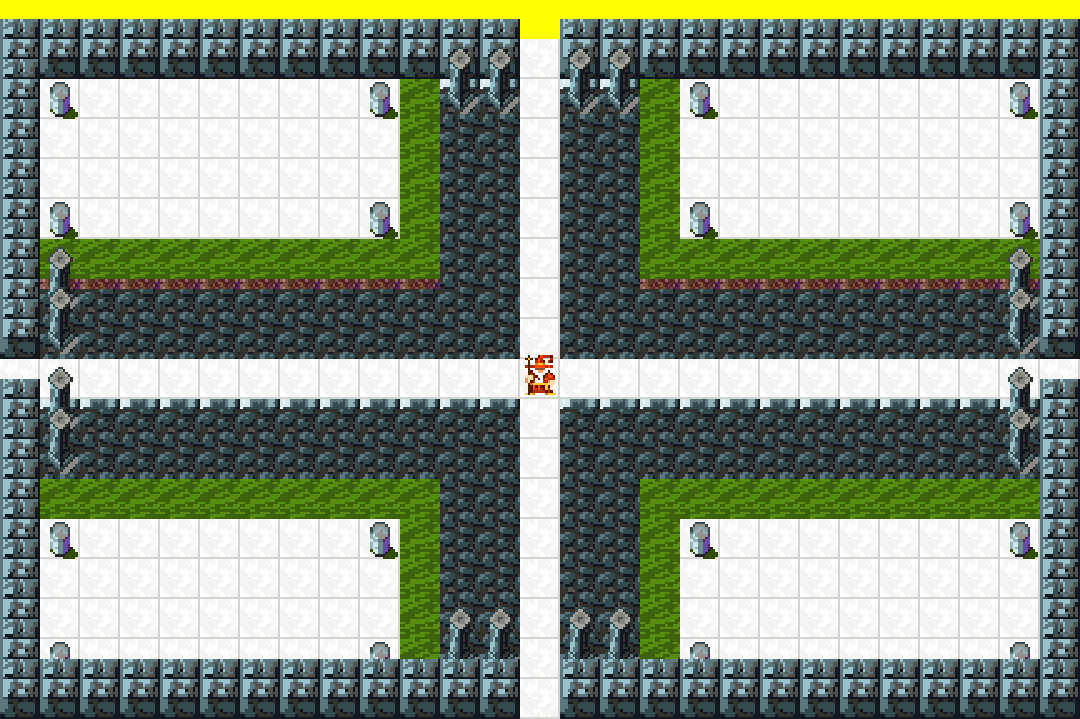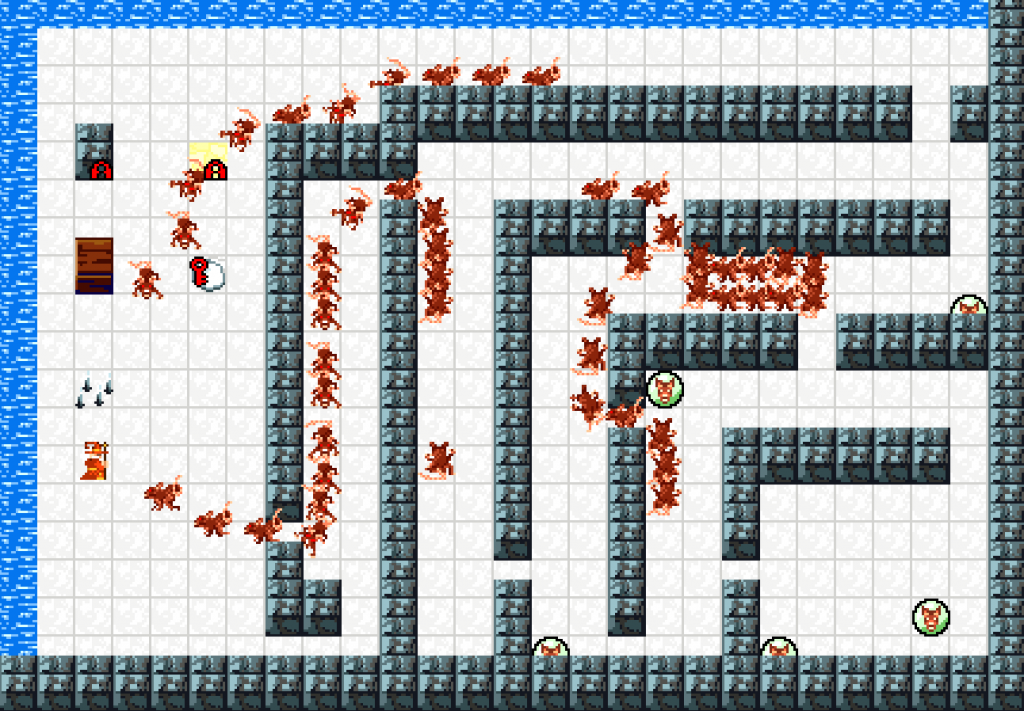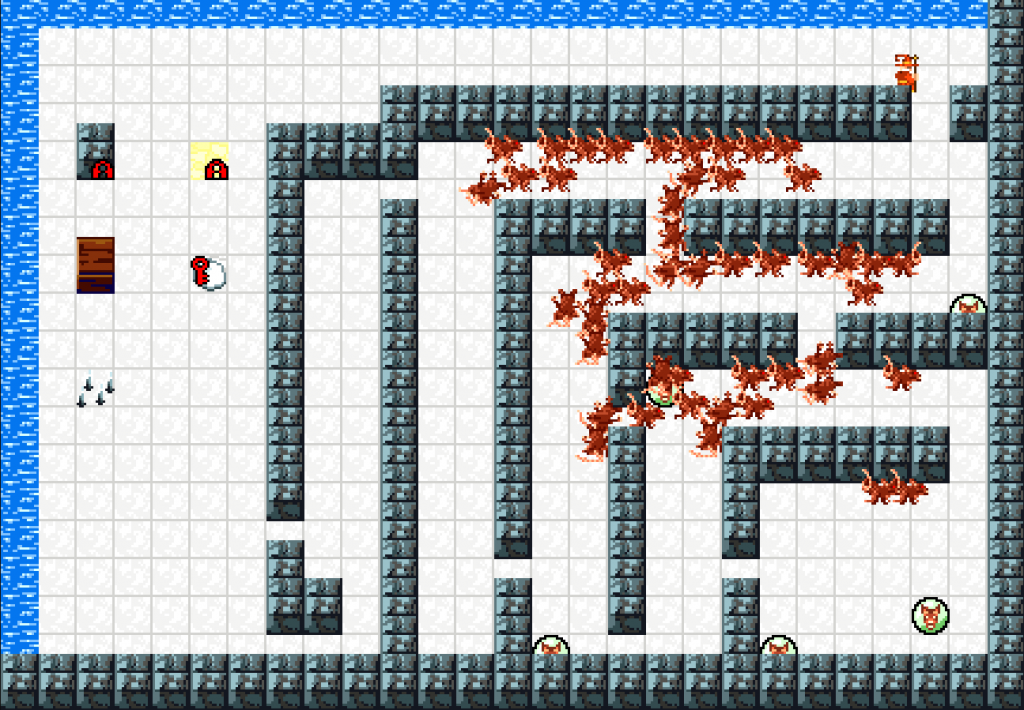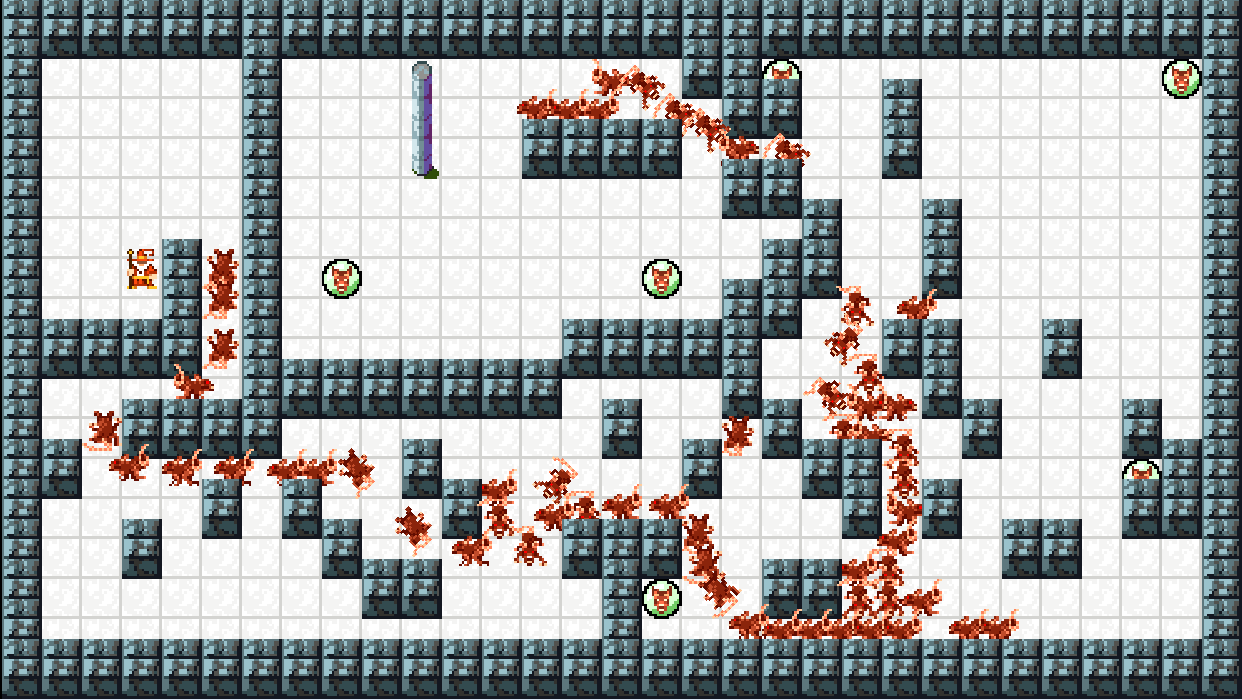
Pathfinding on the pixel level works great now.
As you can see in the above screenshot, the rats will find their way to you really fast. It’s so much better than the tile based pathing that it’ll take some rebalancing. If an interior room full of fast moving monsters suddenly gets opened, they’ll swarm you really fast if they have a path to you. One archer or knight is not going to be able to take them out. AOE attacks from the bomber will be a bit more effective though, and maybe even necessary if you face something like the above scenario.
A new dimension in balancing will also be the monster AI. The red rats above are using omniscient pathing, meaning they have a psychic awareness of the summoner’s location, and will find the fastest route there. This type of behavior might need to be used sparingly, because it’ll get overwhelming. A lot of lower level mobs will wander aimlessly, use Gauntlet style movement, or need vision to be aggroed. Boss creatures can also affect the AI of the lower level mobs, for example granting them awareness of the player’s position.
